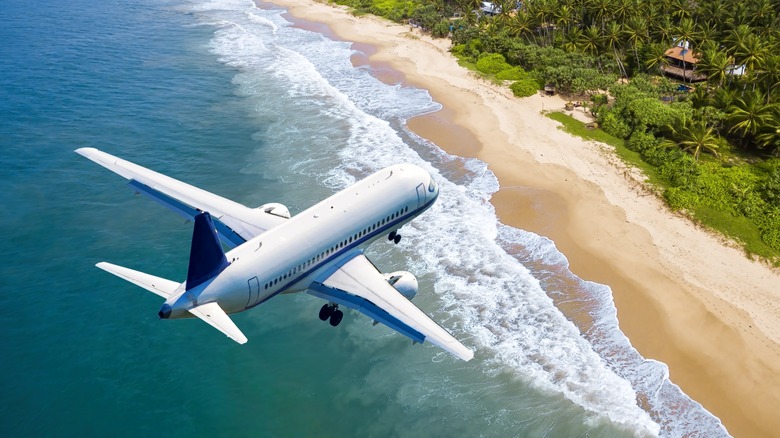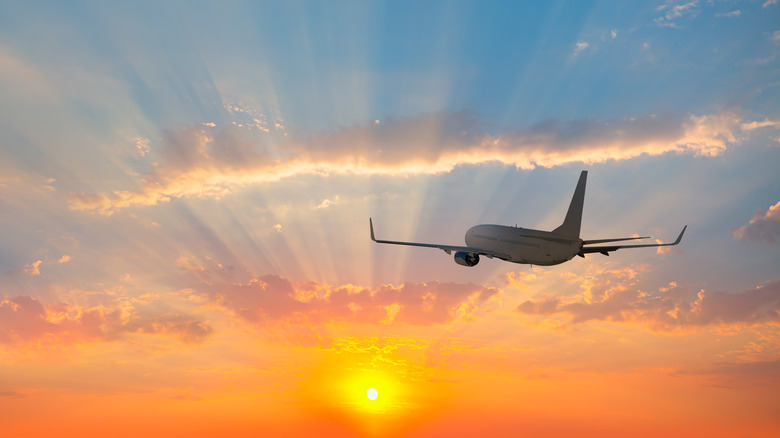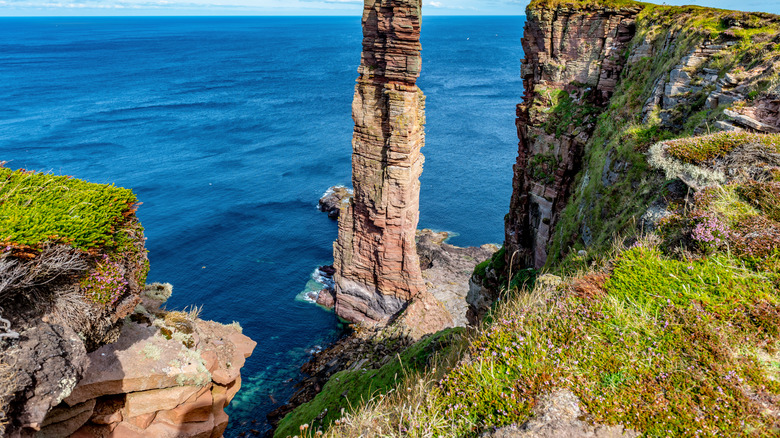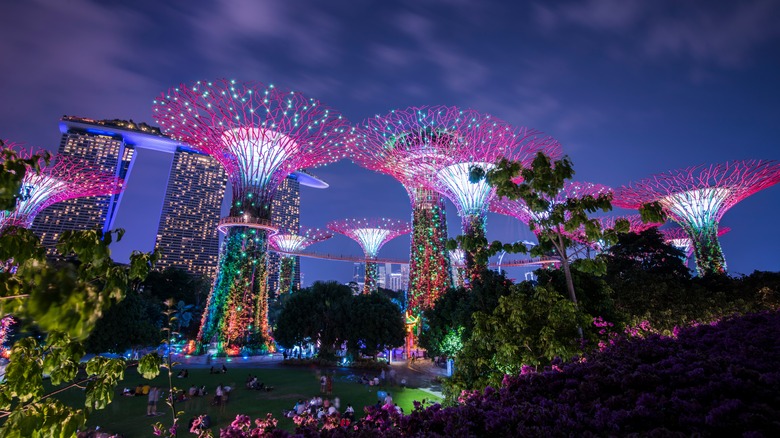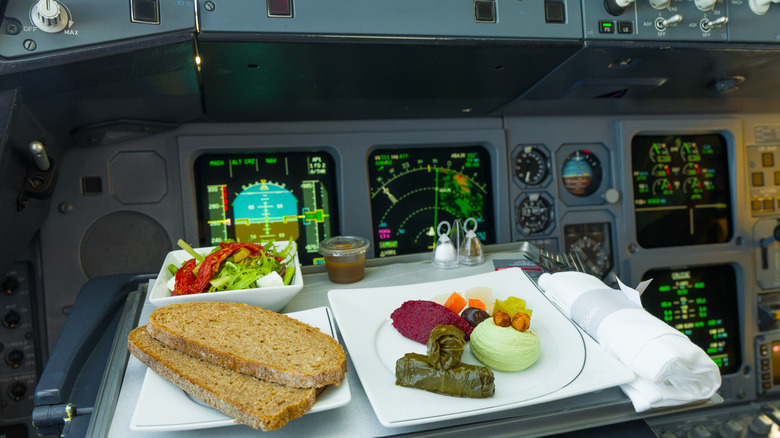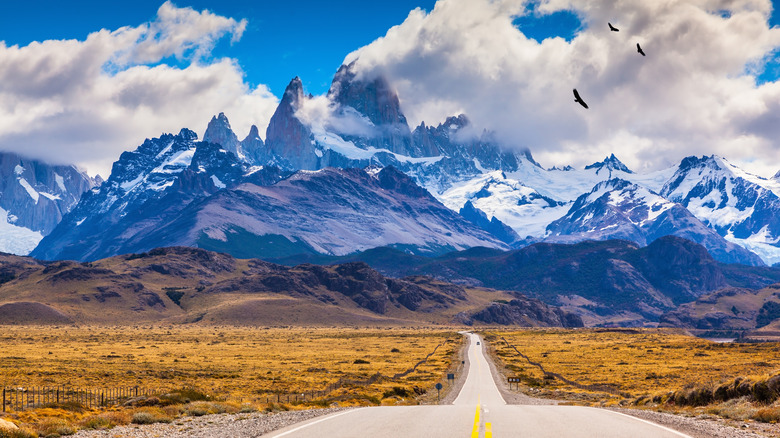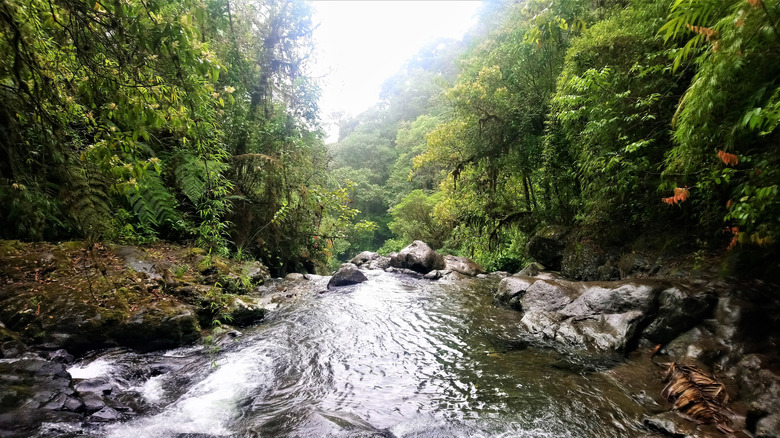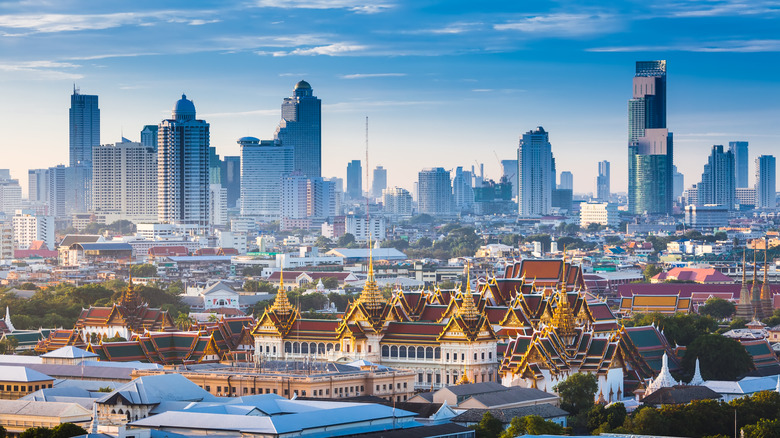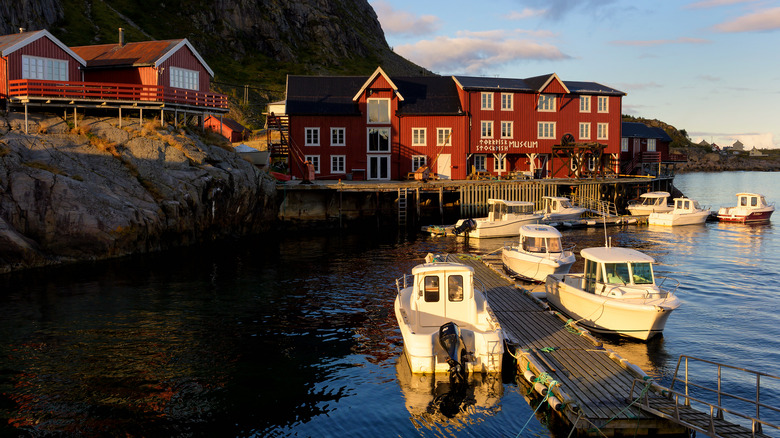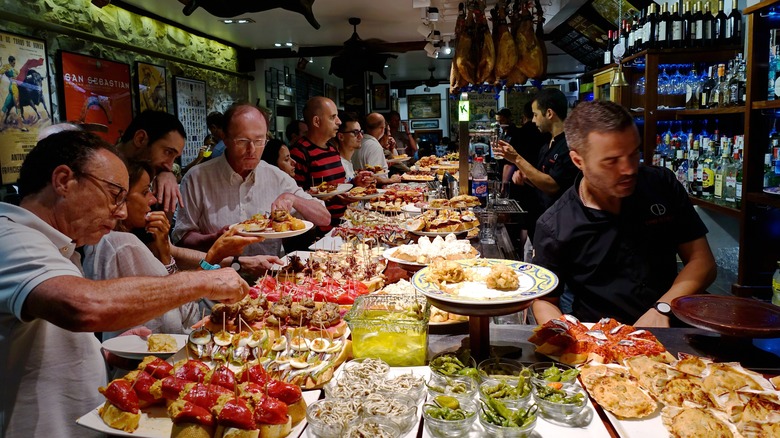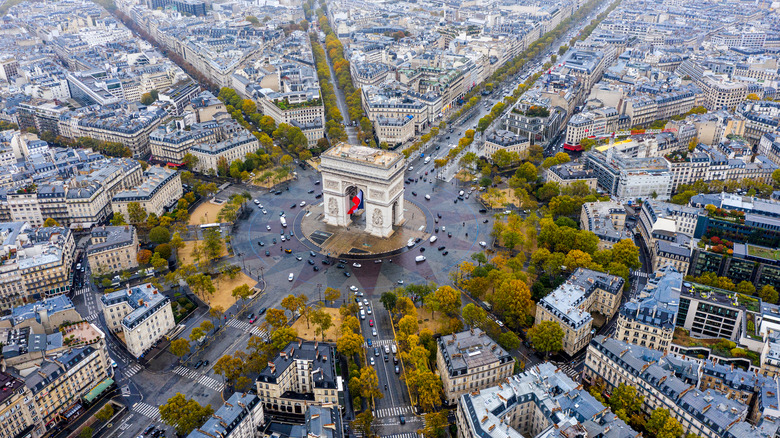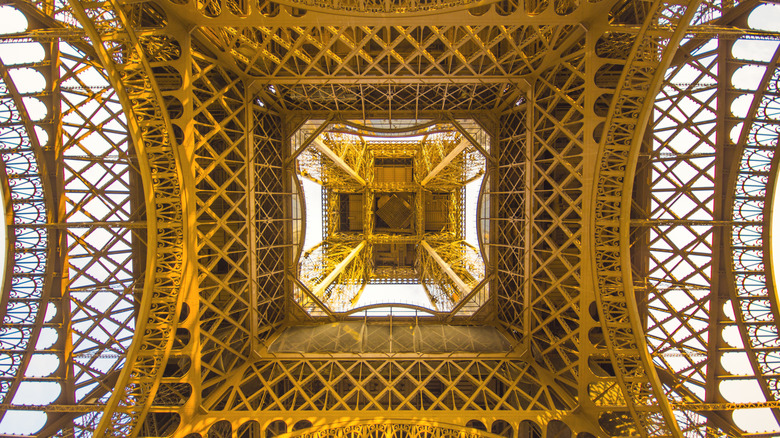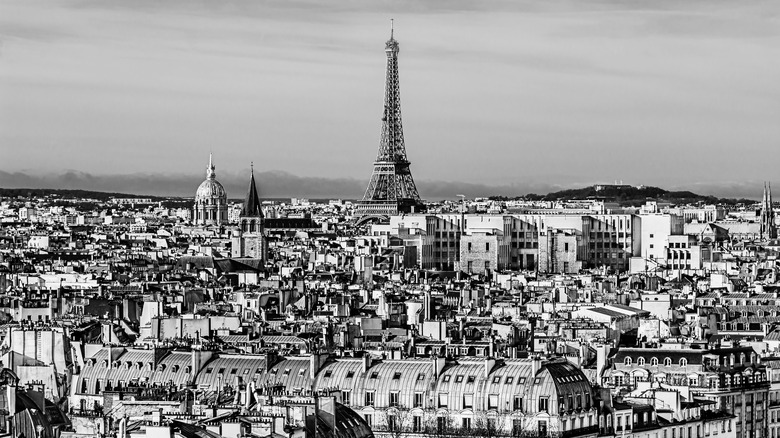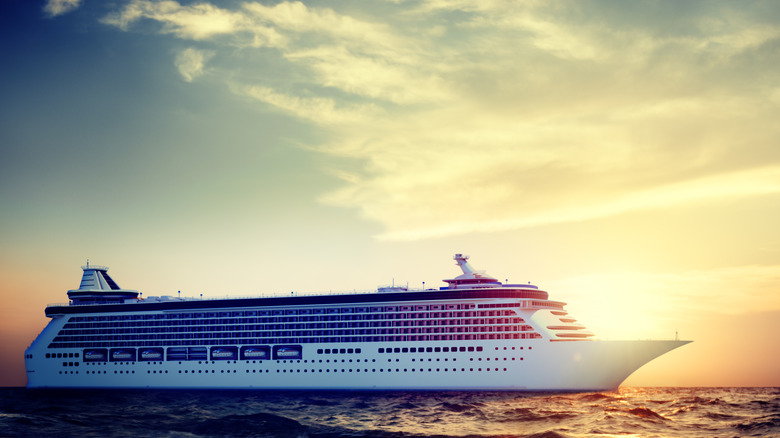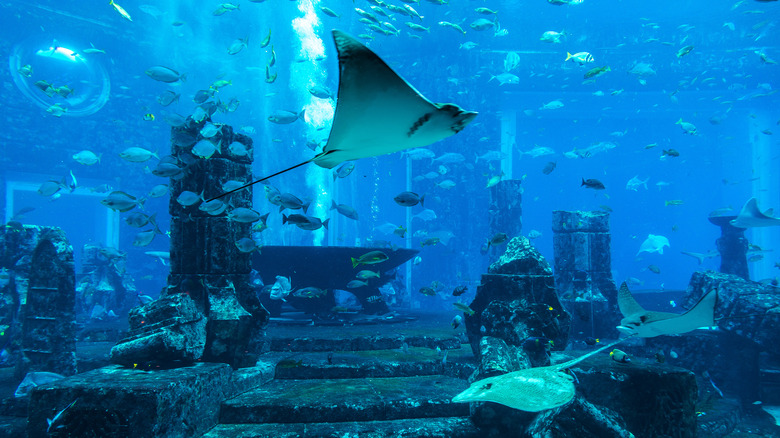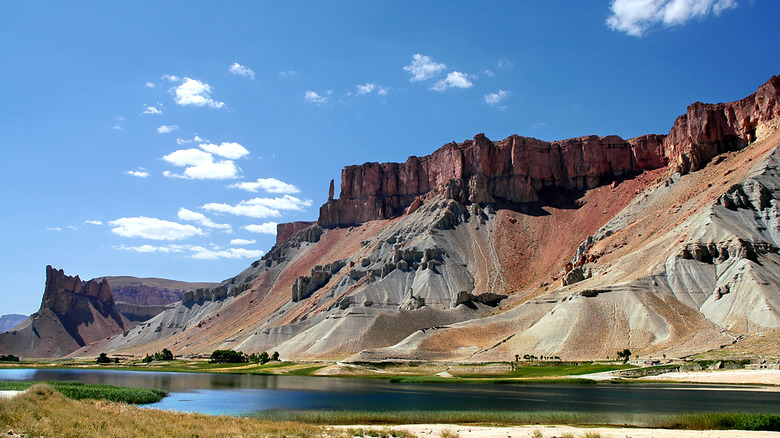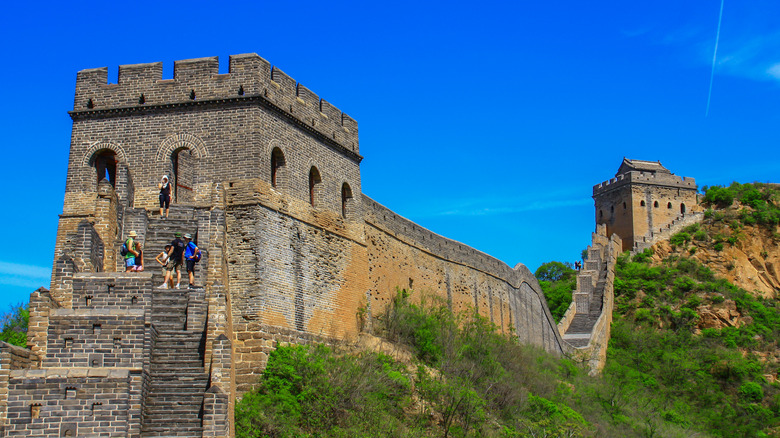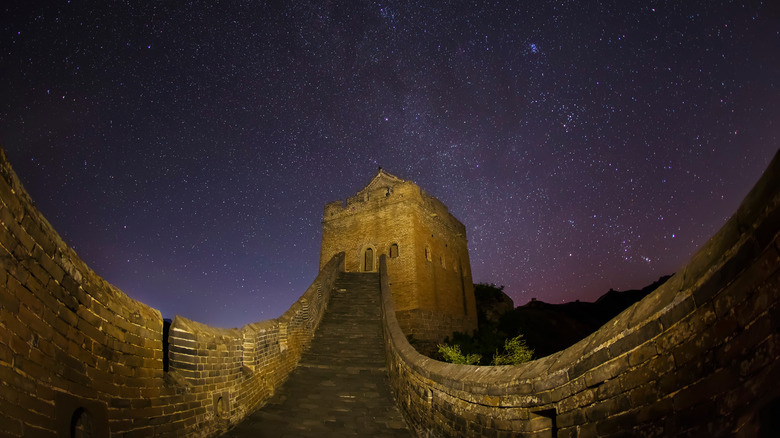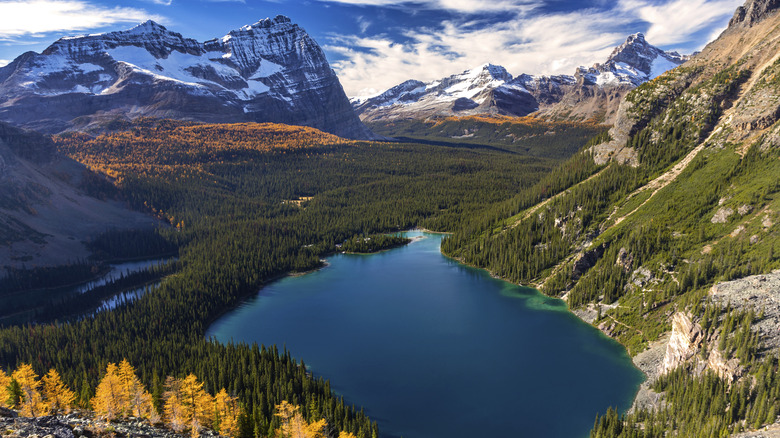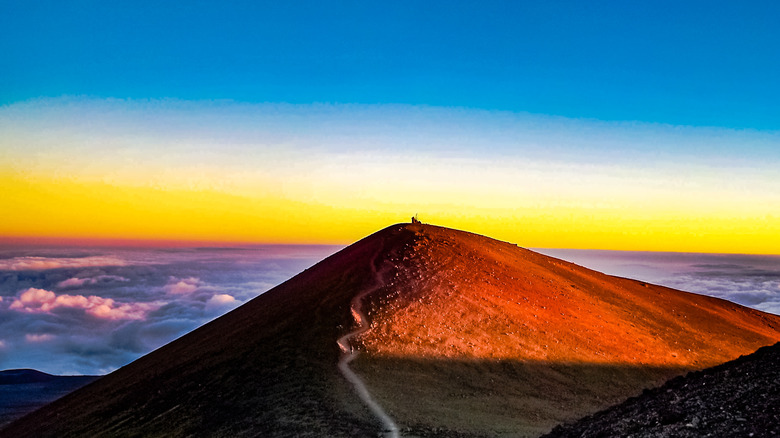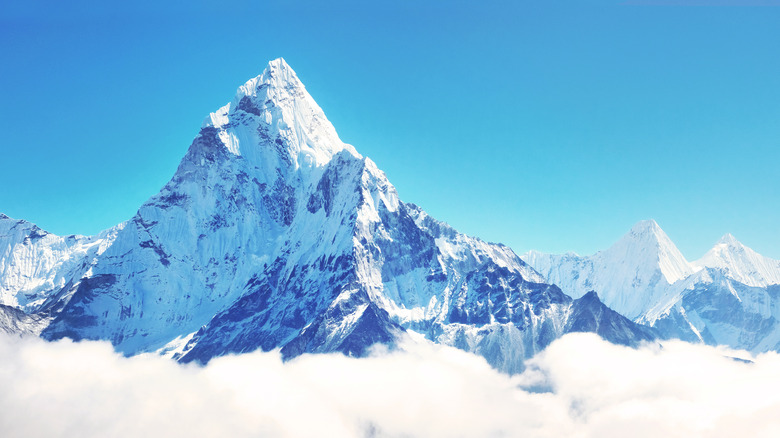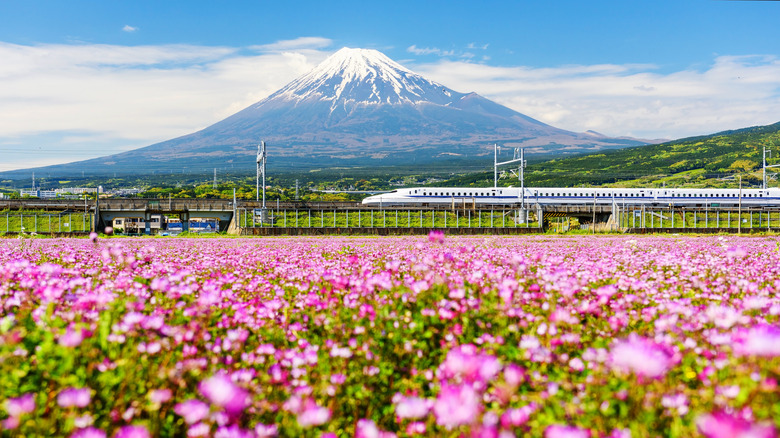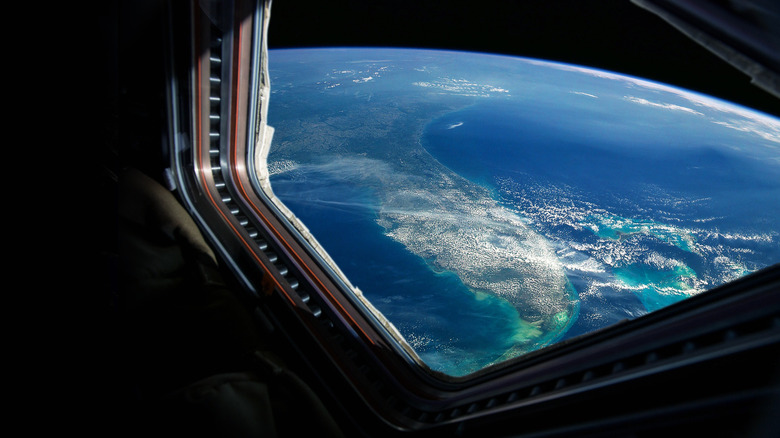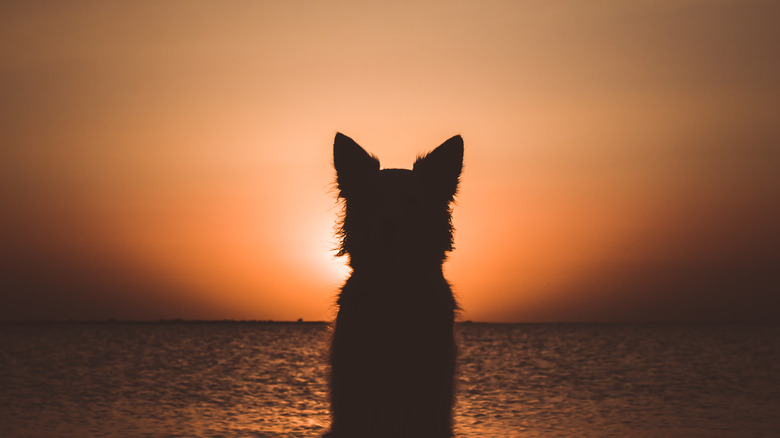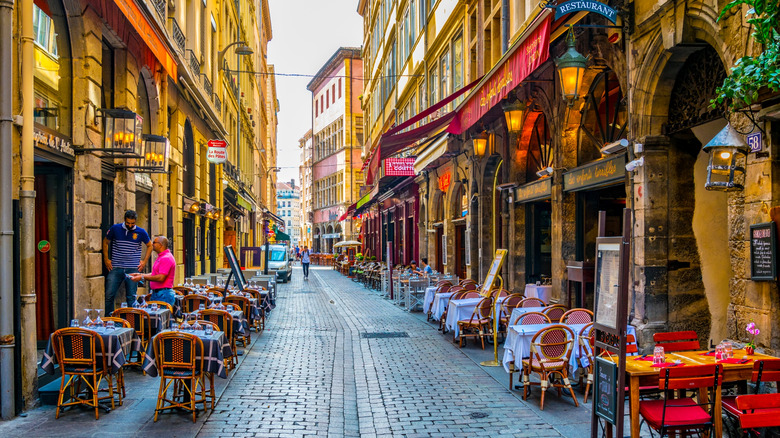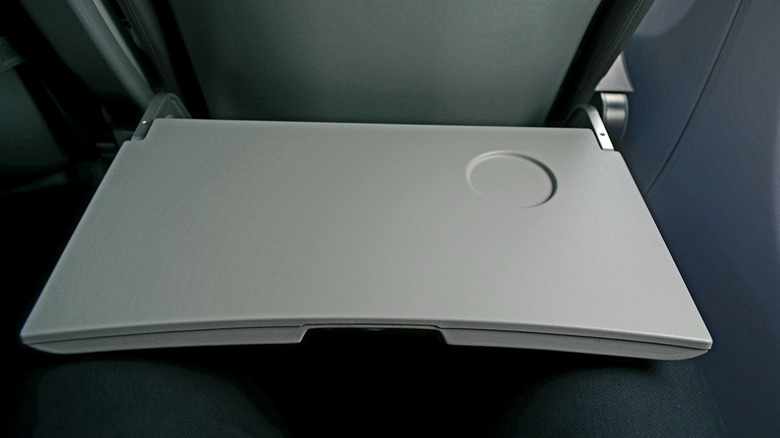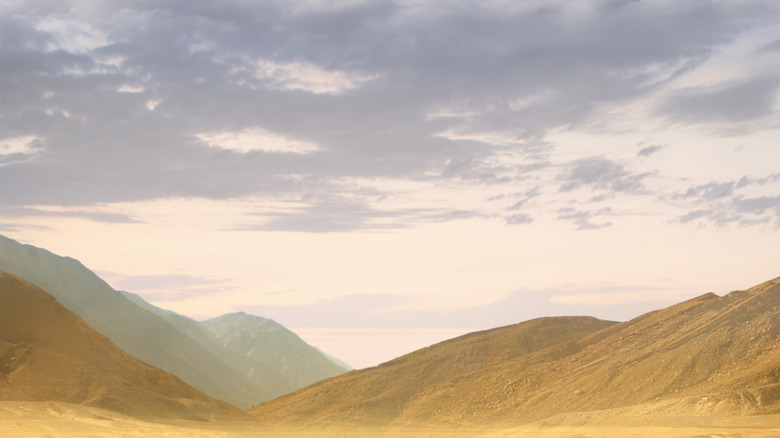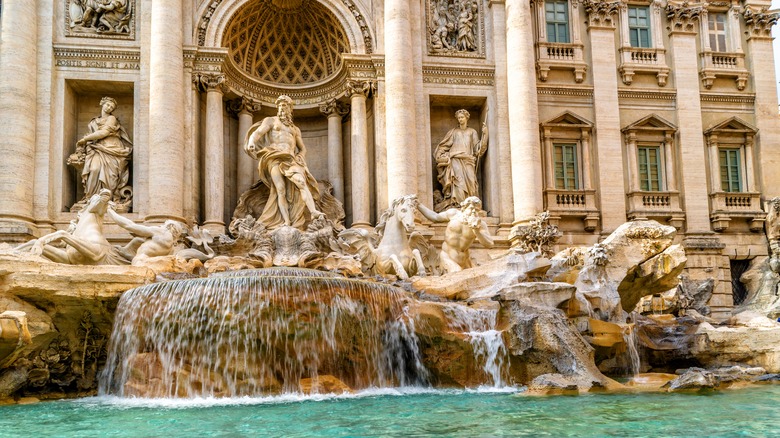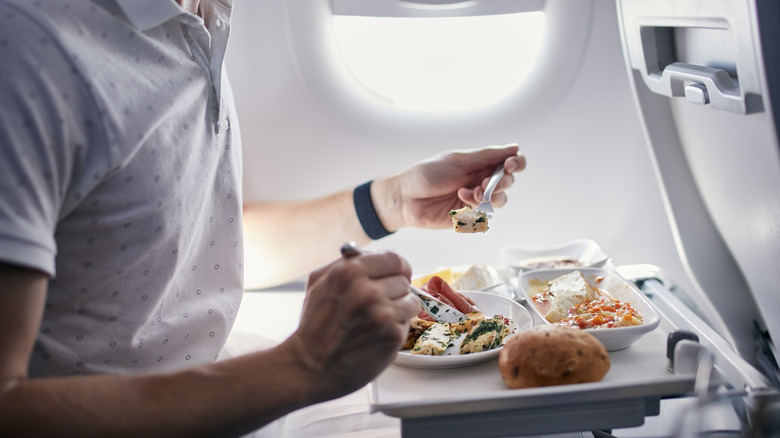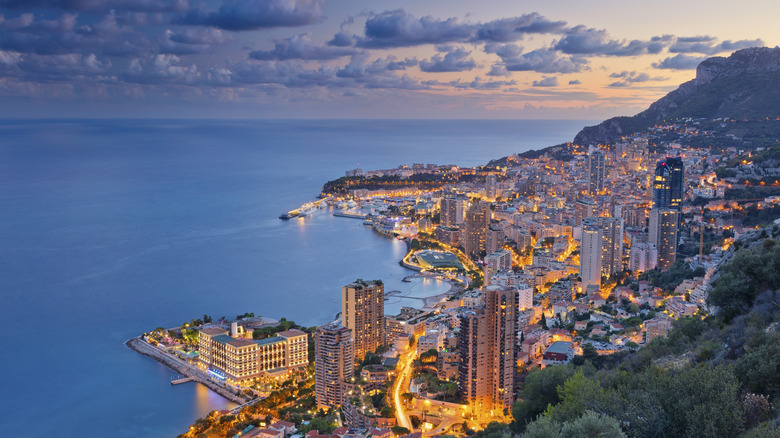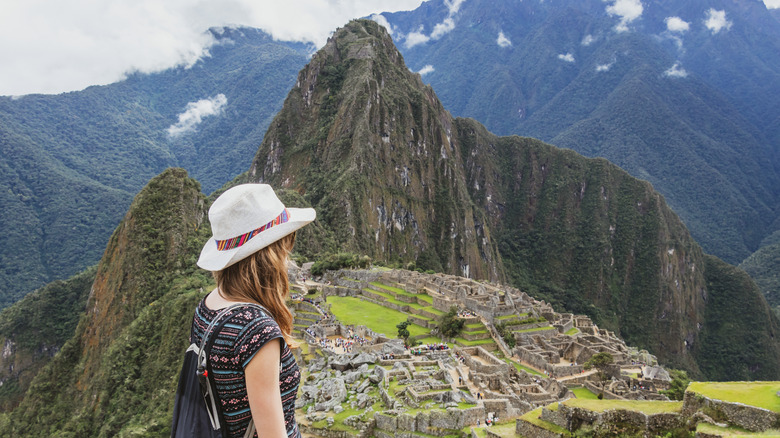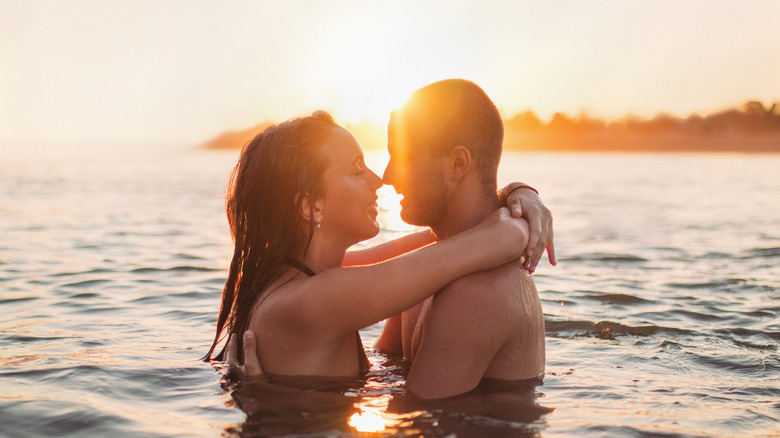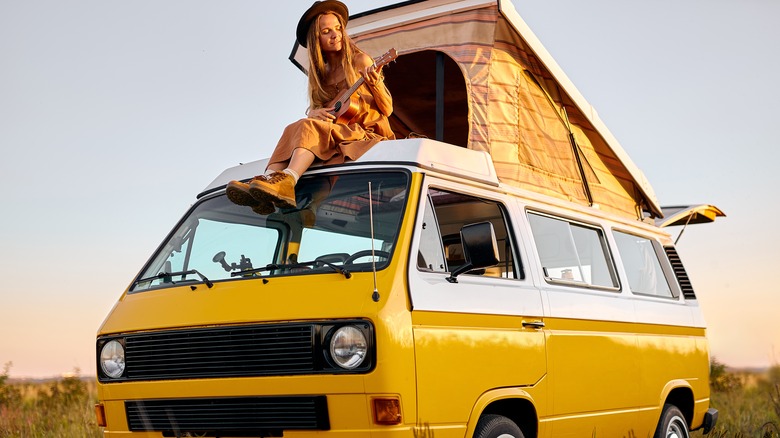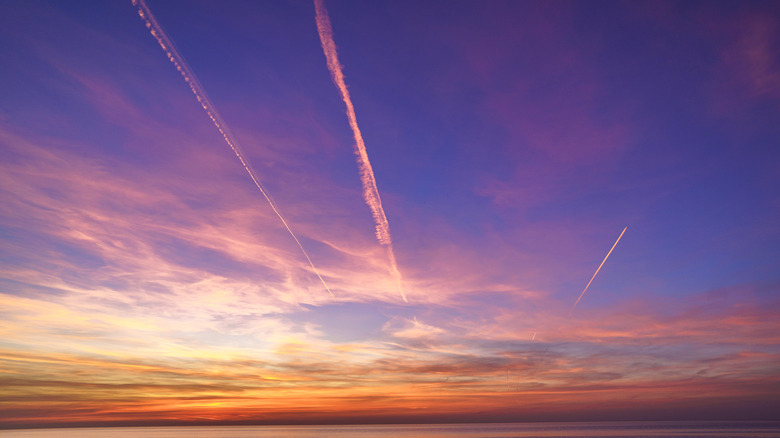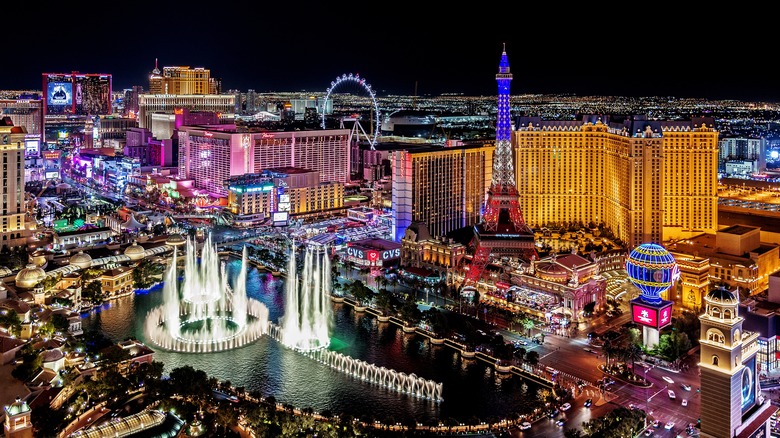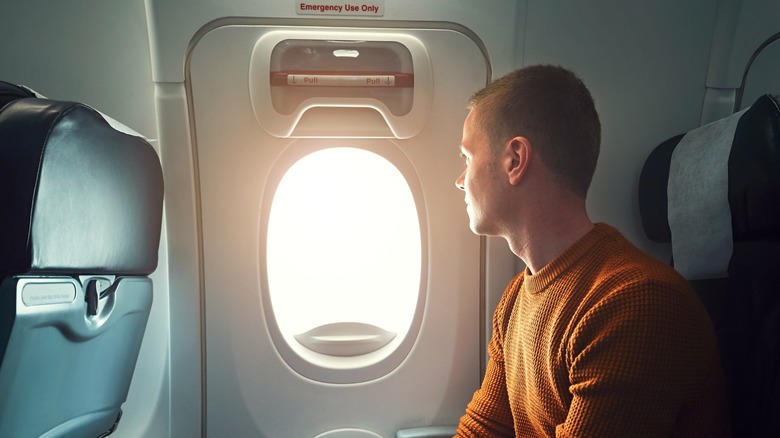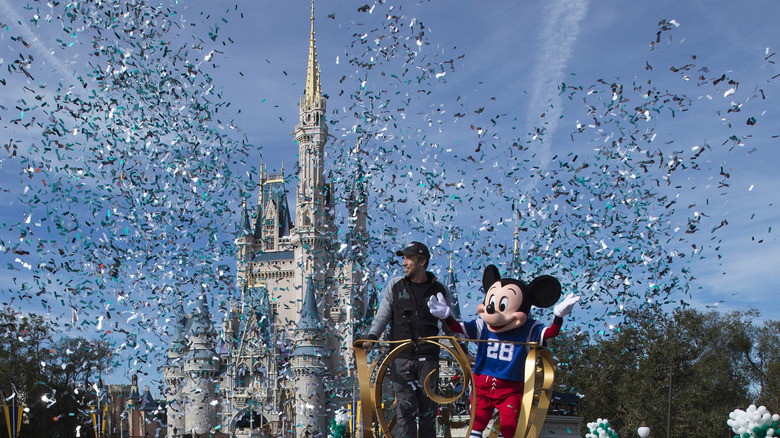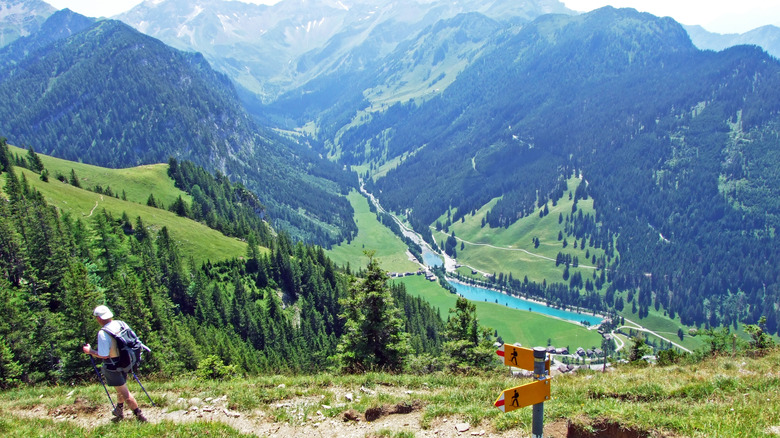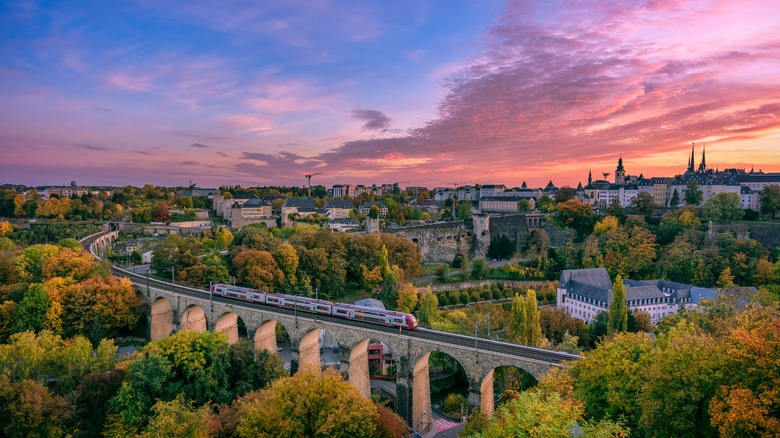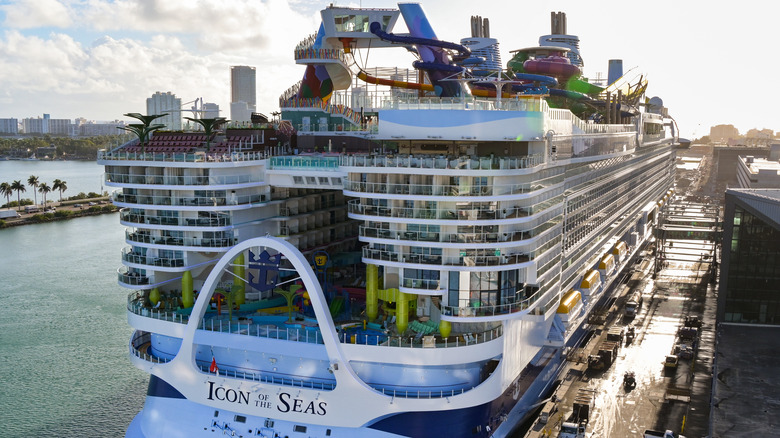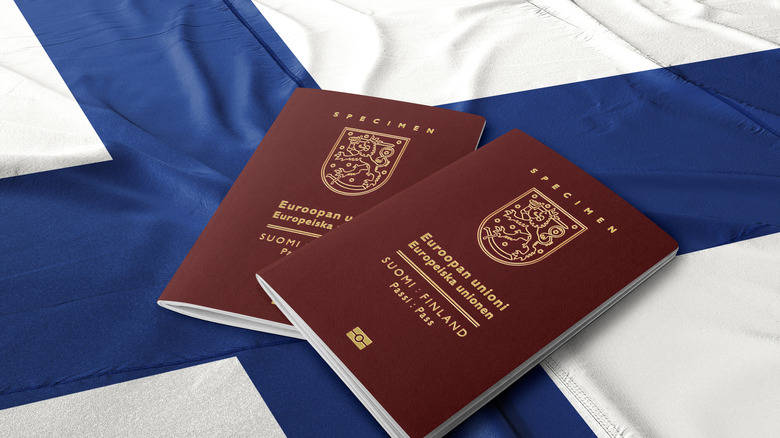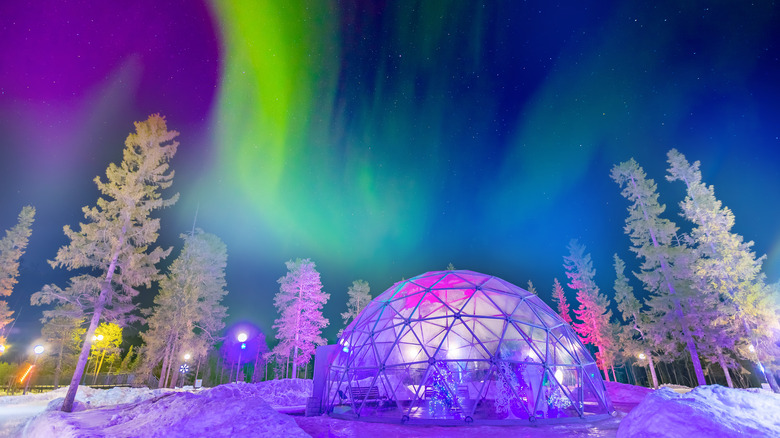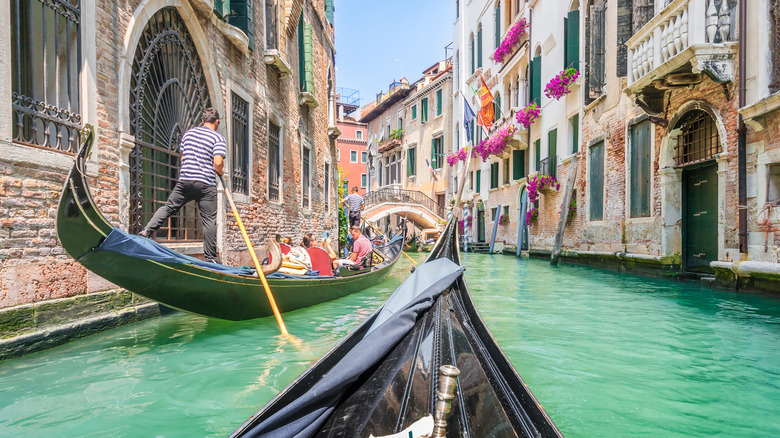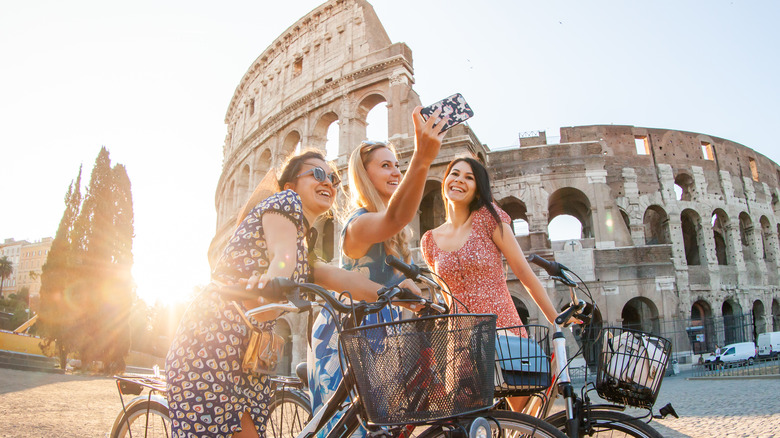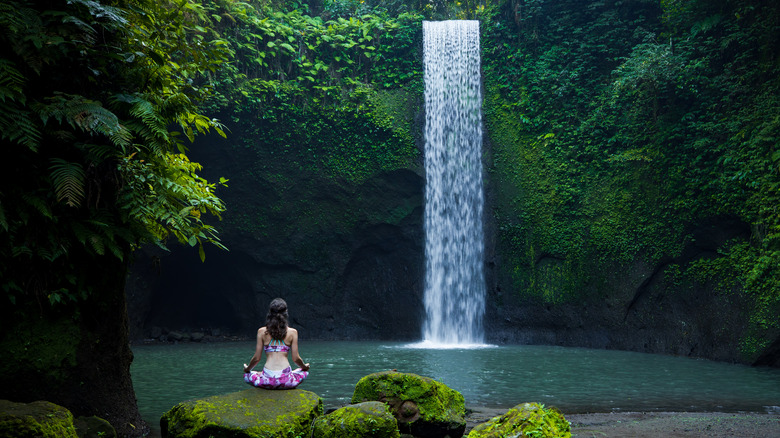50 Weird Travel Facts You Should Know
From levitating trains to massive garbage vacuums under Disney World, the world is full of the weird and wonderful. While there are plenty of reasons to travel, experiencing the weird and wonderful first-hand is a pretty good reason. And, fortunately, in the world of travel, it's only getting weirder and more wonderful.
Want to check into a space hotel? Give it a few years. Wonder where your coin goes after wish-throwing at Trevi Fountain? We'll tell you. We've collected 50 facts about travel, and while these may not cause you to bindle up and hobo east, the facts are still pretty interesting. If nothing else, you'll know some useful and useless stuff after reading.
1. Jet lag is worse when you travel east
Jet lag is a drag. After a long flight, typically over three or more time zones, you may quickly trade the excitement of arrival for a zombie-fied taxi ride to the hotel. This occurs because our internal clock is out of whack with our destination's time, messing up our circadian rhythm's typical day-night cycle.
According to the Sleep Foundation organization, jet lag is particularly draining when traveling from west to east. The reason is pretty simple — your internal clock is better prepared to travel backward (west) than speed up (east). Traveling east, you're literally flying to meet the sunrise.
2. The shortest commercial flight takes under two minutes
Keep your tray table stowed to prepare for takeoff ... and landing. If you're ever island-hopping in Scotland, you may have the chance to take the shortest commercial flight in the world.
According to Scotland tourism, the flight from the island of Westray to Papa Westray, both of which are part of the Orkney Islands, typically takes one minute and 14 seconds. Known for colorful puffins and the Yesnaby Castle sea stack, a pretty cool rock formation, the Orkney Islands are also an apparent thrill ride for those who like taking off and landing.
3. The longest commercial flight takes almost 19 hours
Yikes. Nineteen hours on a commercial flight is a tough one. That's five meals, two naps, four stretches, and five rom-coms. Per Upgraded Points, the current longest commercial flight typically lasts 18 hours and 50 minutes.
From Singapore to New York's JFK International Airport, you'll travel nonstop for 9,537 miles around the globe. To make the super long haul somewhat bearable, the flight only utilizes premium economy and business class seating. If that sounds like too much, maybe we could go see Scottish puffins instead?
4. There's a free, public wine fountain in Italy
East of Rome, nestled in between the Adriatic coastline and Apennine Mountains, there's a beautiful Italian region called Abruzzo. In Abruzzo, there's a vineyard called Dora Sarchese Vineyard in Caldari di Ortona. The vineyard lies on the Cammino di San Tommaso, an ancient pathway and pilgrimage route, as the remains of St. Thomas are located in Ortona.
And in this region, within this vineyard, on this spiritual route, there's now a fountain that provides free, public wine using Montepulciano Nitae grapes, per Wine Traveler. Unlike similar European wine fountains, the Dora Sarchese wine fountain provides wine continuously for weary pilgrims and travelers. Salute.
5. Pilots never eat the same meal
A simple yet effective safety precaution, it's standard practice that airplane pilots and their co-pilots eat different meals before and during their flight, per Business Insider. The reasoning is pretty simple. If one pilot gets sick, due to their grumpy meal, and becomes incapacitated, the other pilot can take over.
While this isn't a mandated rule by the Federal Aviation Administration, many airlines set their own standards of practice. Most industry insiders contend that pilots typically eat the first-class meal, while co-pilots eat business class.
6. The longest road in the world is nearly 19,000 miles long
Running from Prudhoe Bay, Alaska to the southern tip of Argentina, the longest road in the world is the Pan-American Highway, per Dangerous Roads. The highway is actually a network of roads that weave through 14 countries.
Over the 19,000-mile road trip, if heading south, you'll drive through the American Rockies, the high desert of Mexico, and the rainforests of Costa Rica. You'll then hug South America's Pacific Coast until you meet the Andes in Patagonia, which offers fitting scenery to match the ending of an epic journey.
7. It's (realistically) impossible to drive from Central to South America
While the Pan-American Highway runs from Alaska to Argentina, you'll need to ferry across the Darién Gap to make the complete journey. It's pretty much impossible to cross the area near the Columbia-Panama border, which is where the roadless Darién National Park is located. According to Dangerous Roads, the area's terrain is full of waterfalls, mountains, and watersheds.
Per the BBC, the Darien Gap was once driven through in 1960. The expedition took five months at an average pace of 200 meters per hour, so yeah...
8. Bangkok is actually the longest 'place' name in the world
Bangkok is one of the most popular travel destinations in the world, especially among backpackers and digital nomads who probably don't pronounce the city's proper name correctly. According to the U.S. News & World Report, the Thai name for Bangkok is Krung Thep Maha Nakhon, which translates to Great City of Angels. If you've ever visited the Land of Smiles, then yeah, maybe so.
However, Krung Thep Maha Nakhon is actually short for the full Sanskrit and Pali name for Bangkok: Krung Thep Mahanakhon Amon Rattanakosin Mahinthara Ayuthaya Mahadilok Phop Noppharat Ratchathani Burirom Udomratchaniwet Mahasathan Amon Piman Awatan Sathit Sakkathattiya Witsanukam Prasit.
9. The shortest place name is Å
While surprisingly not the birthplace of the Fonz, Å is a sleepy fishing village in Norway, and it's actually pronounced "oo" like in the word floor. Using pretty nonsensical alphabet logic, we've surmised that Å is the shortest place name in the world.
However, the village of Å is actually tied with a few other one-letter locations around the world. According to Mental Floss, there's also a Y in Alaska, a Y in France, an Ö in Sweden, and an Ø in Denmark.
10. Science finds that Spanish is the happiest language
According to the USA Today, a study evaluating 10 major languages found that Spanish is the happiest language. By going through volumes of text, which included books, news captions, the Twitter-verse, and other forms of content, researchers chose the top 10,000 most popular words and ranked them from dreary to dreamy.
For instance, the word "greed" would receive a low score, while "love" received a high score. After tallying the scores, Spanish had the happiest vernacular. Muy bien! English came in third, which ain't too bad. Of the 10, Chinese tended to be the most negative.
11. China doesn't do time zones
Geographically, China is a huge country, and until the late 1940s, it had five time zones, per Culture World. However, when Communism took hold, leaders decided to give China just one time zone to appear more unified. This time zone is called Beijing Standard Time (BST), or China Standard Time (CST).
As far as the practicality of one time zone, the sun rises at about 10 a.m. in some western provinces. Maybe daily moonlit breakfasts don't invoke the happiest of conversations.
12. France is the most visited country in the world
Welcoming approximately 89 million international visitors per year, per Exoticca, France is the most visited country in the world. From the metropolitan charm of Paris to the elegance and natural beauty of the French Riviera, the appeal of visiting France is well warranted.
After France, Spain and the United States rank as second and third, respectively. Germany, Mexico, China, Italy, and Turkey also top the list of most visited countries. In our humble opinion, each of these destinations absolutely deserves a visit.
13. The Eiffel Tower was once yellow
Yes, the Iron Lady once adorned a shade of yellow, per History.com, a reflection of Parisian's ever-evolving style. At its unveiling in 1889, the Eiffel Tower had a reddish-brown hue. After about 10 years of mixed reviews, Paris coated the tower in yellow, which kind of turned back into yellow-brown after a while.
Currently, the Eiffel Tower is painted every seven years (using 60 tons of paint) with a special "Eiffel Tower Brown" color to keep the Lady looking young.
14. The Eiffel Tower was once hated
While the color of the Eiffel Tower may've received mixed reviews, the shared opinion of the sheer existence of the Eiffel Tower was less mixed. During its construction, the tower was universally hated, especially among the creatives of Paris, including architects and sculptors.
According to History.com, 300 prominent intellectuals and artists ran a letter in an 1887 newspaper, protesting on behalf of the French people against the Eiffel Tower's existence.
15. The world's longest cruise set sail in 2023
Those with sea legs and deep enough pockets were able to embark on the world's longest cruise. According to Business Insider, Royal Caribbean launched the Ultimate World Cruise in 2023. Over 274 days, the cruise plans to visit over 150 destinations in 65 countries on all seven continents. The cruise is expected to conclude in Miami on Sept. 10, 2024.
You'd travel on the Serenade of the Seas cruise ship, which can accommodate nearly 2,500 passengers. For an interior stateroom, the price starts at $61,000 per person, while a junior suite starts at a healthy $112,000.
16. The world's most expensive hotel room is underwater
When we think of super-fancy (and costly) hotel rooms, we envision cloud-busting penthouses with panoramic views and crystal pianos. However, the most expensive hotel is actually under the ocean, and no, we haven't found Atlantis (yet).
In St. Lucia, you can book a night at Lovers Deep, a luxury submarine hotel. Along with choosing which direction the submarine voyages, you'll also enjoy five-star hotel amenities that rival the most opulent landlocked accommodations. According to The Richest, a night under the sea will cost you $150,000 per night.
17. Someone broke the record for visiting every country the fastest right before COVID-19
In 2019, Brazilian Anderson Dias broke the record for visiting all 195 countries in the fastest time ever. According to Full-Time Travel, he completed his journey in 543 days, which was 11 days shorter than the previous record. In a somewhat poetic fashion, he accomplished this months before COVID-19 locked down the world and halted travel.
In an interview, he cited Afghanistan as the destination he's most excited about revisiting, comparing its natural beauty to Switzerland but without the crowds.
18. Sticky rice strengthens the Great Wall of China
Built by different Chinese dynasties over 2,000 years, per the Smithsonian, the Great Wall of China is an awe-inspiring example of human engineering. Although Matt Damon's fight against an ancient reptilian race in the movie "The Great Wall" pretty much explains everything about the structure, there's one more interesting fact about the wall's history.
Scientists studying The Great Wall discovered that sticky rice was added to its mortar. In testing, the scientists found that organic sticky rice made the wall much stronger, which may help to explain its resilience over the centuries.
19. No, you cannot see the Great Wall from space
While the epic reptilian wars of Matt Damon are well-documented, there's one stubborn myth about the Great Wall of China that we can finally lay to rest. You cannot see the Great Wall of China from outer space, according to the Smithsonian.
However, to be fair, it depends on how you'd define outer space. Apparently, it's possible to see The Wall from low orbit, or about 100 miles up. That said, due to the blending topography, you'd actually only be able to see the structure's shadow if the sun was positioned perfectly.
20. The longest hiking trail is over 17,000 miles long
The Appalachian Trail, the Great Walks of New Zealand, and the Grand Italian Trail all provide epic, if not a little daunting, hiking experiences. However, the world's longest hiking trail is found in Canada. Formerly known as the Trans-Canada Trail, The Great Trail is now more aptly named and runs for 17,398 miles, per TC Trail.
Looping through Canada, The Great Trail touches the Atlantic, Pacific, and Arctic Oceans and weaves through the Canadian Rockies. The section of the trail through Banff National Park is particularly scenic.
21. Someone finally climbed the world's tallest mountain in 2021
Actually, two people finally climbed the world's tallest mountain. Although Mount Everest is the world's highest mountain, peaking at the highest altitude, the world's tallest mountain is actually Hawaii's Mauna Kea, according to Guinness World Records.
From its underwater base in the Hawaiian Trough to its snowy summit, Mauna Kea is 33,480 feet tall, which is roughly 4,500 feet taller than Mount Everest. Using a submarine, kayaks, bikes, and their feet, Victor Vescovo and Cliff Kapono spent three days ascending Mauna Kea in 2021.
22. The tallest mountain in the solar system dwarfs Mount Everest
To continue dragging the Himalayan mountain, Mount Everest is pretty 'eh' when compared to the tallest mountain in the solar system. If you measure from the bottom of the Tibetan Plateau (which some don't) to the peak of Mount Everest, the mountain is about 5.5 miles tall.
According to Smithsonian Magazine, Olympus Mons on Mars is 15.5 miles tall. Along with being the tallest mountain in the solar system, Olympus Mons is about the size of Arizona.
23. The world's fastest public train is in Shanghai (but not for long)
Currently, the world's fastest public train runs from Shanghai's Pudong Airport to Longyang Road Station, topping out at 286 miles per hour, per CNN. With experience as a guide, it's a wild yet ultra-smooth ride. Known as the Shanghai Maglev, the train utilizes magnetic levitation technology to accelerate, offering a literally frictionless ride.
However, according to Visual Capitalist, Japan's L0 Series Maglev, a prototype still in testing, has now broken the world record for the fastest train, clocking in at 374 miles per hour. In an unfortunate comparison, Amtrak's trains top out at about 160 miles per hour, according to the Washington Post.
24. A space hotel is slated to open within five years
While it may sound a bit sci-fi, space hotels shouldn't be fiction much longer. According to Architectural Digest, Orbital Assembly, a company that specializes in space station design, is planning to open a space hotel within the next few years — actually, two space hotels.
Voyager Station will be the main hotel and designed to accommodate up to 400 guests. However, the company recently announced designs for a smaller hotel called Pioneer Station. Although it can only accommodate 28 visitors, the hotel may be operational by 2025. To keep people from floating away in their sleep, both hotels will use artificial gravity through a rotating wheel-like design. Welcome to brave new worlds.
25. In 2022, Savannah became the first dog to walk around the world
According to CNN, Tom Turcich from New Jersey became the 10th person to ever walk across the world. The feat took him seven years, and Turcich finally completed the 29,826-mile journey in 2022. While Turcich is the 10th documented person to hoof it across the globe, his dog Savannah became the first canine to ever do so.
Four months into his journey, Turcich rescued a puppy-aged pup named Savannah from a shelter in Austin, Texas. Savannah then spent the first seven years of her life seeing the world.
26. France has the most Michelin-starred restaurants of any country
France is known for its cuisine, but the land of wine and cheese is actually an embarrassment of delicious riches. From the classic restaurants of Lyon to the innovative sidewalk cafés of Paris, France is home to the most Michelin-starred restaurants in the world.
According to Chef's Pencil, France currently boasts 632 Michelin-starred restaurants. Among these, 74 restaurants hold two stars, while 29 restaurants have been awarded three stars, which is the crème de la crème of the prized designation.
27. Tokyo has the most Michelin-starred restaurants of any city
While France offers the most Michelin-starred restaurants in the world, Japan is second on that list, and Tokyo is home to the most Michelin-starred restaurants of any city. According to Statista, the mega-metropolis boasts 203 star-studded restaurants, as of January 2022.
After Tokyo, you can dine at 108 starred eateries in Kyoto, which actually ties with Paris, or head to the 96 award-winning restaurants in Osaka. While the Sukiyabashi Jiro restaurant, from "Jiro Dreams of Sushi" fame, doesn't have any Michelin stars due to its exclusivity, it's still a dream dining experience for sushi aficionados.
28. Bathrooms are not the dirtiest place on airplanes
Understandably, most jet-setters assume that an airplane's bathroom is the least hygienic spot on an airplane. According to Business Insider and a study by the Canadian Broadcasting Corporation (CBC), this assumption just isn't the case.
The study evaluated 18 flights across three airlines, taking microbiome samples from various surfaces. Unfortunately, you won't need to leave your seat to find the dirtiest surfaces of a plane. Your tray table, headrest, and seat pocket are all dirtier than the bathroom. However, before you freak out, these surfaces are comparably gross to the surfaces of most offices and classrooms.
29. Flying is like walking through the Sahara Desert
Have you ever felt like garbage after a long-haul flight? While it could be jet lag, you're more likely suffering from dehydration. According to Marie Claire, the relative humidity of the plane's climate-controlled environment can be as low as 10% humidity. This is about three times dryer than the Sahara Desert.
The reason is pretty simple. Airlines pump in air from outside, and at such high altitudes, there's not much water vapor. If you want to feel refreshed upon landing, you'll need to continually drink water throughout your flight. And while easier said than done, you'd need to avoid coffee and alcohol as well.
30. Trevi Fountain makes about $1.7 million per year in coinage
Trevi Fountain, one of the most iconic sculptures in Rome, is also a philanthropic feature of Italy's capital. While it's hard to gauge how many dreams come true among coin-tossers, the 18th-century fountain takes in about $1.7 million per year, according to Smithsonian Magazine.
If you toss in a coin while well-wishing for the poor, you'd be in luck. Historically, the money made from dream- and coin-casting into Trevi Fountain goes to Caritas, a Catholic charity that aids the poor.
31. You lose a third of your taste buds while flying
Airplane food gets a bad rap, but we'll defend it about 66% of the time (sort of). Apparently, due to various factors of flying, you lose about a third of your ability to taste salty and sweet flavors while in the air. According to Business Insider, the dry air, cabin pressure, and white noise experienced during flying all contribute to your diminished palate.
To counter this, airplane caterers try to enhance the flavor of the food, which can be hit or miss. Depending on the environment of the particular airplane, your food may taste bland or overly seasoned.
32. Monaco is smaller than New York's Central Park
There are a lot of interesting facts about Monaco, though most of them concern the country's insane wealth. According to Business Insider, nearly 33% of its population is a millionaire, and the poverty rate is zero. While Monaco is known for its opulent casinos, residents aren't allowed to gamble, which is possibly why the poverty rate is zero.
However, the most interesting fact is that Monaco is super tiny. The billionaire playground on the French Riviera is only .78 square miles, making it about 60% the size of Central Park. Unsurprisingly, Monaco's housing averages about $4,500 per square foot. Yeesh.
33. Women are far more likely to travel solo than men
Opting to travel solo has become increasingly popular over the last few years. And why not? You're free to go where you want, when you want, and to do what you want. You'll also be a bit more inclined to meet like-minded travelers with shared interests. But, apparently, women are leading this trend of self-reliant travel — by a lot.
According to Condor Ferries, an astounding 84% of solo travelers are women. While there's nothing wrong with traveling with friends, men seem to be a bit more hesitant to travel solo with a bolo.
34. For most couples, travel improves their sex life
While traveling solo has its benefits, traveling with your partner also has its, um, perks. A 2022 poll by Passport Photo of 1,000 Americans was drop-trou revealing. According to the poll, 72% of survey respondents were more open to experimenting while traveling.
If you're deciding where to travel for rekindling, the three most fantasized locations for an out-of-norm rendezvous were on the beach, in nature, and in the ocean. However, 83% of respondents said that too much screen time could kill the mood, so grab a blanket and drop the phone.
35. Traveling makes you smarter and more creative
Not only does travel make you friskier, but science indicates that traveling can also make you smarter and more creative. According to Forbes, a study showed that exposure to multicultural experiences helps us to integrate different perspectives into our narrative. By doing so, we create new neural pathways.
In addition, a different study that measured individual creativity, using the remote associates test (RAT), compared two sets of participants. Half of the group was required to write about an international experience before the test, while the other half was not. The group who recalled their experience performed 50% better.
36. Statistically, the U.S. is incredibly anti-vacation
While travel may make us smarter and more creative, American employees (and employers) don't seem to care. According to the BBC, multiple surveys revealed that employees tend to leave their vacation days on the shelf. One 2017 survey showed that the average American worker uses about half of their allotted vacation days.
While it's easy to blame the employee that dismisses the benefits of recharging, company culture and American mores can dictate that decision. America is one of the only industrialized nations that has zero guaranteed paid federal holidays.
37. The global average of paid time off is 18 days
While America loves to work, the rest of the world tends to appreciate their time off. The global average of paid, federally mandated days off is 18 days, per Thrillist. This doesn't even include the PTO that a company may provide.
According to Benefit News, the European Union requires employers to provide a minimum of 20 paid vacation days, while the U.K. requires 28 paid vacation days. America has zero guaranteed paid holidays and averages 10 paid vacation days overall — the second lowest among all industrialized nations.
38. You can predict the weather from contrails
We've all seen contrails crisscrossing through the sky. Not "chemtrails" of biohazard exhaust created by shape-shifting lizard people, contrails occur for the same reason you see your breath when it's cold. It's mostly water vapor.
According to Scientific American, you can actually predict the weather by contrails. If the contrail is thin and sparse, this indicates low humidity at high altitudes, which usually means fair weather. If the contrail is thick and lasting, this humid air at high altitudes may precede a storm.
39. Las Vegas has most hotel rooms in the world
At over 154,000 hotel rooms, Las Vegas boasts the most hotel accommodations of any city in the world, per Zawya, which isn't too surprising. What happens in Vegas stays in Vegas because you're pretty assured of some sort of vacancy. Orlando follows Las Vegas as number two on this list.
While Las Vegas offers the most hotel rooms, New York actually ranks as the city with the cleanest hotel rooms, according to USA Today and AAA's "Best of Housekeeping" inspection. Las Vegas was not involved in the rankings, so apparently, it's a roll of the dice.
40. You can't open an airplane door in flight
We've all seen the movies. A fight breaks out on a commercial flight between two international assassins, which typically ends with the exit door opening to suck everyone out — except the two assassins. Fortunately, this can't physically happen.
According to Wired, there are two reasons for this. First, the exit doors are mechanically locked, and these locks are controlled by the pilot. Second, at cruising altitude, the difference between the outside's air pressure and the cabin pressure seals the door into the airplane's frame. It can't be opened, no matter how well you're trained.
41. You're never more than 30 feet from a trashcan at Disney World
The visionary Walt Disney once sat on a bench at Disneyland, watching to see how far a patron would carry trash before just throwing it on the ground. According to The Daily Meal, that distance averaged to be around 30 steps, which seems about right for 1950s America.
Ever since Walt's faithful day of watching people walk around and litter, Disney parks meticulously place trash cans about 30 feet from each other.
42. Disney World is designed to smell wonderful
If you assume that an insane amount of trash cans would create a stench, you'd be underestimating the Mouse. First, according to Waste 360, massive underground vacuum cleaners suck the trash cans empty periodically. You'll never see someone empty trash cans at Disney World.
Second, Disney parks utilize "smellitizers" to provide specific aromas in certain areas of the park. For example, you'll smell the ocean while waiting for the Pirates of the Caribbean ride and baked goods walking down Main Street.
43. You can walk across Liechtenstein in a day
According to Nations Encyclopedia, Liechtenstein is only about 3.75 miles wide, meaning you can hike east or west and cross the country within a day. While pretty cool as an idea, a real hike through picturesque Liechtenstein will take a bit more time.
You can cross the Rhine River and through the valleys of the Appenzell Alps by hiking the Liechtenstein Trail, according to Adventure.com. A great way to explore all of Liechtenstein over a few days, the 46-mile trail weaves through all 11 municipalities.
44. You can travel from Portugal to Singapore solely by train
If you're a huge train or "Before Sunrise" fan, then you're in luck. You can actually take a train all the way from Lagos in southern Portugal to Singapore. According to Mashable, the transcontinental train route is 11,650 miles and takes at least 21 days to complete.
During the train ride, you'll pass through 13 countries, including Spain, Belarus, Mongolia, Thailand, China, and Malaysia. If you're interested in an epic train journey, the route's sheer distance is the "loco" of motives.
45. Icon of the Seas is now the world's largest cruise ship
After setting sail in January 2024, the Icon of the Seas officially became the largest cruise ship ever constructed, per Royal Caribbean. The mega-ship is nearly 1,200 feet long, which is a bit under four football fields, and features 20 total ship decks.
Along with its sheer size, the Wonder of the Seas features six waterslides (including the tallest waterslide at sea and the first open freefall waterslide), seven pools (one being the largest one ever at sea), a large surf simulator, a rock climbing wall, and more. The ship can also accommodate a staggering 7,600 guests, and boasts over 20 dining options.
46. The Finnish travel the most
According to World Atlas, the Finnish are more likely to explore the world than any other nationality. As a country, the Finns take an average of 7.5 trips annually. This could be due to low unemployment, harsh winters, or a travel-oriented culture, but it doesn't really matter. Seven trips is seven trips.
America is actually second on this list. However, due to America's size, geographical diversity, and the comparable cost of traveling internationally, most Americans travel domestically more than abroad.
47. Finland is ranked as the happiest country in the world
In an absolute coincidence, with no relation to the previous fact, Finland is ranked as the happiest country in the world, per U.S. News & World Report. According to the World Happiness Report, which measures the happiness of 156 countries, Finland was once again the happiest country in the world in 2023. This would be Finland's seventh consecutive year as the happiest.
While Finland may be continually super-stoked, they're not the only one. Finland's northern neighbors were also very happy, with Denmark, Iceland, and Switzerland rounding out the top four happiest countries.
48. Instagrammability is now a primary factor for choosing destinations
According to ICEF Monitor, a market intelligence resource for international school recruitment, a destination's Instagram-worthiness is now a key consideration among travelers. In one survey among millennial U..K. travelers, 40% of respondents prioritized "Instagrammability" over everything else.
When we say everything else, Instagrammability was more important than personal development, local cuisine, or sightseeing. While this may be hard to digest, pictures of pre-eaten meals and selfie-taking sightseeing journeys is Instagram, so...
49. In the past, people said prunes instead of cheese for photos
Speaking of digestible, saying "cheese" when posing for pictures is a pretty recent development. According to Vintage News, one beauty standard of yesteryear was to have a small mouth. So, photographers tended to ask people to say "prune," which apparently makes your mouth look small and noble.
Also, at the time, grinning wasn't exactly associated with good values, as smiling could mean you were childish, dumb, drunk, or all three. In the 1920s, as photography became more popular, Kodak actually created a campaign to say that photos could be a happy affair, introducing the word "cheese" to coax a smile.
50. Science says traveling can help you live longer
While there are plenty of reasons to travel, science shows that traveling can actually lengthen your lifespan, according to CNBC. One particular study followed 1,222 men, starting in the 1960s and continuing until 2014. At the onset, all participants had one heart disease risk factor, such as smoking, high blood pressure, or obesity. Over the years, half of these men received regular interventions and training about weight loss, smoking cessation, etc., while the other half never met with the researchers again.
At the end of the study, the men in the intervention group who short-changed their vacation (taking less than three weeks annually) had a significantly higher mortality rate than men in the control group. Do yourself a favor, live long and travel.
